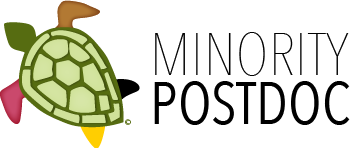We live in a world of have and have-nots. Both groups have the same goal: to be healthy and happy. However, the haves are the science-rich who have a deep understanding and access to science resources, while the have-nots are science-poor. Women, people of color, and low-income individuals are disproportionately represented among the science-poor. The 2014 National Science Foundation Science Indicators show these groups are less likely to have careers in science. To bridge the gap between the science-rich and poor we need better communication. Science journalists are the brokers of science to the general public.
To successfully communicate, science journalists must understand their audience. People contextualize new information as it relates to their personal and in-group circumstance and beliefs. Unfortunately, many science news articles are not relevant for underrepresented audiences. Articles can be jargon-heavy and lack a tangible message to the reader. Although science is a fact-driven enterprise, journalists must offer insights to connect with their audience. Science journalists with a shared background or strong dedication to their audience can effectively engage underrepresented groups. This type of engagement shows the public how science affects their lives and personal situation and consequently fosters interest in science.
In addition, diversity in science journalism promotes advocacy for issues that affect underrepresented groups. Presenting these issues in the news media builds understanding and trust in the scientific process. If there is no voice to represent those who lack the power, the progress of these groups in science will remain stagnant. Advocating for these groups in the sciences will become increasingly important as the United States becomes more diverse.
To this end, I have tried to reach out to groups underrepresented in science. I started a career-focused website called The Day in the Life Project which seeks to increase the salience of people of color and women in professional careers and thereby and foster self-efficacy. My original motivation for the website was the underrepresentation of people in medicine. In addition, we hosted a conference, called the STEP UP (Science & Technology: Emerging professions, Underrepresented Professions) for college and high school students interested in science and technology.
Science journalists are the brokers of science to the general public
I have also contributed to increased diversity by writing articles and opinion editorials. Most recently, I wrote an article entitled The lack of underrepresented minorities in STEM featured on KevinMD. This piece focused on why people of color do not pursue careers in science. Also, I wrote a column for USA Today titled, What awaits Ivy applicant, which documented my personal journey in higher education. In addition, I recently advocated for donating blood for those affected with sickle cell disease, a genetic disease which is prevalence in African Americans in USA Today (How about ice bucket for sickle cell).
Still, I have much to learn to become an effective science journalist. ScienceWriters 2014 is a unique opportunity to hear from leading science journalists. As a future doctor with a passion for science journalism and education, I will use the lessons learnt from ScienceWriters2014 to communicate medical treatment and research advances to the general public. Also, I hope to learn novel communication methods to inspire people from underrepresented groups to pursue careers in science. Finally, I look forward to joining a community of science writers, particularly those from minority groups.
References
K. Sobowale (2012) The lack of underrepresented minorities in STEM, KevinMD, January 4
K. Sobowale (2014) What Awaits Ivy Applicant, USA TODAY, April 17
K. Sobowale (2014) How about ice bucket for sickle cell? USA TODAY, September 1
National Science Foundation (2014) Science and Engineering Indicators
Kunmi Sobowale is a Doctor of Medicine candidate at the University of Chicago interested in health care disparities. His work on mental health and STEM education and has been featured in USA Today, Health Affairs, KevinMD, and Primary Care Progress Notes. He co-founded a website, Day in the Life Project, showcasing the personal narratives of people of color and women in various professional careers to provide role models and a career guide for adolescents. He also conceived and organized Science & Technology: Emerging Professions Underrepresented Professions (STEP UP) Conference to inspire the next generation of women and minority leaders in science and technology. He has explored mental health in Japan, Hong Kong, mainland China, and Vietnam. His education includes Stanford Inter-University Center for Japanese Studies and Yale University (BA: Behavioral Neuroscience). Any opinions expressed in this article are solely those of the author.
The citation for this article is:
K. Sobowale (2014) Engaging the Science-Poor. DiverseScholar 5:5
Originally published 5-Oct-2014
DiverseScholar is now publishing original written works. Submit article ideas by contacting us at info@DiverseScholar.org. This work is licensed under a Creative Commons Attribution-Noncommercial-No Derivative Works 3.0 Unported License.
![]()
